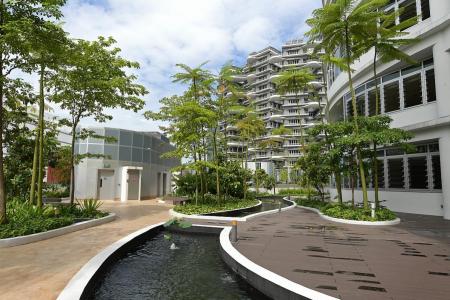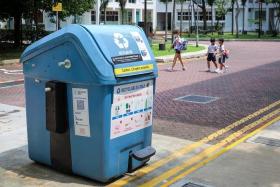Future HDB projects to feature nature in more deliberate way
Greenery will be used to enhance resident well-being
New Housing Board projects will incorporate greenery in a more deliberate way than before, using the landscaping to provide not just green spaces, but also to enhance the natural environment and the well-being of residents.
Under the Biophilic Town Framework, introduced in 2013, natural ecosystems are part and parcel of town planning and design, going beyond aesthetics to thinking about how nature can be intertwined with the built environment to promote a greater sense of place and create even more liveable spaces.
For example, trees planted in new projects may be chosen for how effective the species is in removing air pollutants.
Biodiversity studies will also be carried out before site works so that existing flora and fauna can continue to flourish. For instance, if a certain butterfly species is found in the native site, "host plants" that attract such species will be planted in habitat zones in the development.
Biophilia refers to an innate affinity for and connection with the natural world. The Biophilic Town Framework was first adopted in 2015 by the Punggol Northshore District - its 5,700 flats will be ready from 2020.
Since then, it has been refined through collaboration with the National University of Singapore and will be applied to all new projects launched from this month.
HDB announced the updated framework yesterday at the International Federation of Landscape Architects World Congress held at Marina Bay Sands.
HDB chief executive Cheong Koon Hean said: "(It) provides a strong foundation for holistic planning and design of neighbourhood landscapes, so that our residents can enjoy a strong sense of place and well-being."
Nature advocates such as Ms Chloe Tan were encouraged by the move.
"If development must happen, then habitat enhancement is the best thing that can be done," said Ms Tan, an ecologist who specialises in biodiversity.
"By knowing what kind of species there are, planners will have a better idea of how to restore their habitats."
The key elements considered under the framework are soil, flora and fauna, outdoor comfort, water, and people.
Under the guidelines, measures were also introduced in Punggol to draw residents outdoors.
Wind and sunlight simulation studies were done so that community facilities and footpaths could be located in suitable places.
A district-wide network of vegetated bioswales and rain gardens were also added to the design to filter out sediments and treat rainwater run-off naturally.
Associate Professor Fung John Chye from the National University of Singapore School of Design and Environment said: "Retaining the ecological value of the original land is definitely encouraged."
He added: "Research shows the therapeutic effect of nature and the biophilic practice should, in the long run, lead to better quality of life, if not health benefits."
Get The New Paper on your phone with the free TNP app. Download from the Apple App Store or Google Play Store now


